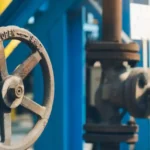Pipe Handling and Storage: Tips to Prevent Damage Before Installation

In industrial projects involving pipelines—whether for oil and gas, water distribution, power generation, or construction—the cost and complexity of the infrastructure depend heavily on the integrity of its piping systems. While much focus is placed on pipe material selection, sizing, and installation, one crucial but often overlooked factor is pipe handling and storage. Improper practices can cause deformation, corrosion, and damage even before the pipes reach the installation phase, leading to costly delays, replacements, and safety risks.
At New World Horizon Saudi Arabia , we emphasize not only supplying high-quality pipes but also educating stakeholders on maintaining their integrity from procurement to placement. Best practices for handling and storing pipes safely are described in this article to assist guarantee a seamless and damage-free installation procedure.
Why Proper Pipe Handling and Storage Matter
Pipes are vulnerable to environmental and physical harm. During transport or onsite handling, they may suffer from dents, scratches, or cracks—especially if dropped or struck by machinery. In storage, exposure to moisture, contaminants, and incorrect stacking can lead to corrosion or warping.
Improper handling doesn’t just affect the pipe’s appearance; it compromises structural integrity, sealing capability, and overall project safety. For industries operating under strict regulations and high-stakes environments (like oil and gas or power projects), maintaining pipe condition is non-negotiable.
Read More: Leak-Free and Efficient Piping Systems
Common Risks in Pipe Handling and Storage
- Mechanical Damage – Pipes, especially larger and heavier varieties, can easily sustain dents and scratches if not lifted correctly or if dropped. Damage to pipe ends may also affect their ability to form leak-proof joints.
- Corrosion – When stored outdoors without protective covers or coatings, pipes can suffer corrosion—particularly carbon steel or alloy steel pipes. Even stainless steel can be affected if exposed to aggressive chemicals.
- Contamination – Pipes that are not sealed or capped can accumulate debris, moisture, or dust inside, leading to contamination that compromises fluid quality during operations.
- Ovality and Deformation – Improper stacking or excessive weight on the pipes can deform them, causing issues with fitment or flow restriction during installation.
Read More : Best Practices for Pipe Installation and Maintenance
Tips for Safe Pipe Handling
- Use Proper Lifting Equipment
When handling pipes, especially in bulk or larger sizes, always use lifting slings, spreader bars, or forklifts designed for cylindrical loads. Avoid using chains or hooks directly on the pipe surface to prevent scoring or dents. - Support Pipes Evenly
Whether lifting or transporting, ensure pipes are supported at multiple points along their length. Uneven support can cause flexing, bending, or cracking—particularly in long or thin-walled pipes. - Avoid Dragging Pipes
Dragging pipes along the ground can cause surface scratches or deform pipe ends. Always lift and place pipes gently. - Cap the Ends
Use plastic or rubber end caps to prevent debris, insects, or moisture from entering the pipe. This is especially critical for pipes intended to transport sensitive or clean fluids.
Storage Best Practices
- Store on Stable, Elevated Racks
Keep pipes off the ground by storing them on racks or beams with padded supports. This prevents contact with moisture, mud, or gravel and reduces the chance of ground-induced corrosion. - Stack Carefully and Uniformly
If stacking pipes, ensure they are aligned correctly with uniform weight distribution. Place larger, heavier pipes at the bottom and lighter pipes at the top. Use wooden wedges or spacers between layers to prevent movement and ovality. - Protect from Weather
Use tarpaulins, sheds, or protective covers to shield pipes from rain, direct sunlight, or dust. However, ensure airflow is maintained underneath the cover to avoid condensation buildup, which can also lead to corrosion. - Rotate Inventory (FIFO)
Deliver older goods first by following the First-In-First-Out (FIFO) strategy. This reduces the risk of pipes deteriorating in long-term storage. - Inspect Regularly
Regular inspections should be conducted to check for signs of rust, dents, or misalignment in stored pipes. Early detection can prevent these minor issues from becoming major problems.
Special Considerations for Coated Pipes
Pipes with external coatings (like FBE, epoxy, or galvanized coatings) need extra care. Any damage to the coating can expose the pipe to moisture and lead to hidden corrosion. Avoid stacking these pipes directly on each other without proper padding. Always inspect coatings for chips or cracks after handling.
Safety Guidelines
In all stages of handling and storage, personnel should wear appropriate PPE (gloves, helmets, steel-toed boots) and follow workplace safety protocols. Lifting operations should be supervised, and equipment should be operated only by trained professionals.
Partnering with a Trusted Supplier
Many of the pipe failures or complications during installation can be traced back to mishandling long before the pipe reached the field. That’s why it’s vital to work with a pipe supplier who not only delivers quality but also provides guidance on handling, storage, and best practices.
At NWH Saudi Arabia, one of the leading pipes suppliers in Saudi Arabia, we offer complete support—right from product selection to logistical guidance—ensuring our clients receive pipes that are in pristine condition and ready for installation.
Conclusion
Proper pipe handling and storage are essential to preserving pipe quality, preventing unexpected failures, and ensuring the success of your industrial projects. From using correct lifting gear to implementing protective storage, these practices can significantly extend the life of your piping systems. For projects across oil and gas, power, construction, or water treatment, investing time and care in pipe management—before installation—pays off in long-term efficiency and safety.



